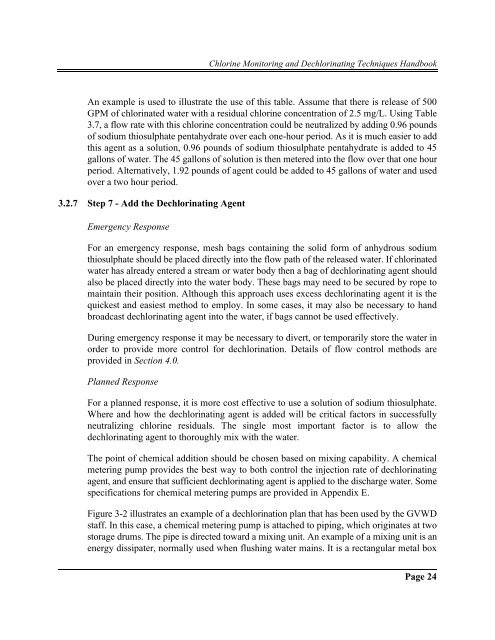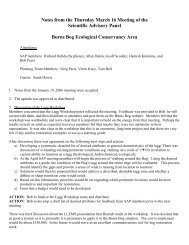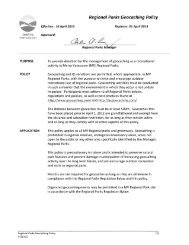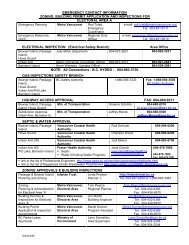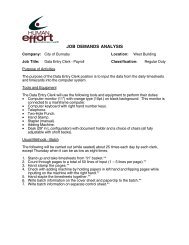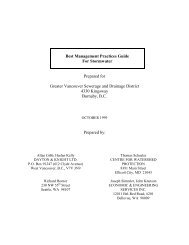Chlorine Monitoring and Dechlorination Techniques Handbook
Chlorine Monitoring and Dechlorination Techniques Handbook
Chlorine Monitoring and Dechlorination Techniques Handbook
You also want an ePaper? Increase the reach of your titles
YUMPU automatically turns print PDFs into web optimized ePapers that Google loves.
<strong>Chlorine</strong> <strong>Monitoring</strong> <strong>and</strong> Dechlorinating <strong>Techniques</strong> H<strong>and</strong>book<br />
An example is used to illustrate the use of this table. Assume that there is release of 500<br />
GPM of chlorinated water with a residual chlorine concentration of 2.5 mg/L. Using Table<br />
3.7, a flow rate with this chlorine concentration could be neutralized by adding 0.96 pounds<br />
of sodium thiosulphate pentahydrate over each one-hour period. As it is much easier to add<br />
this agent as a solution, 0.96 pounds of sodium thiosulphate pentahydrate is added to 45<br />
gallons of water. The 45 gallons of solution is then metered into the flow over that one hour<br />
period. Alternatively, 1.92 pounds of agent could be added to 45 gallons of water <strong>and</strong> used<br />
over a two hour period.<br />
3.2.7 Step 7 - Add the Dechlorinating Agent<br />
Emergency Response<br />
For an emergency response, mesh bags containing the solid form of anhydrous sodium<br />
thiosulphate should be placed directly into the flow path of the released water. If chlorinated<br />
water has already entered a stream or water body then a bag of dechlorinating agent should<br />
also be placed directly into the water body. These bags may need to be secured by rope to<br />
maintain their position. Although this approach uses excess dechlorinating agent it is the<br />
quickest <strong>and</strong> easiest method to employ. In some cases, it may also be necessary to h<strong>and</strong><br />
broadcast dechlorinating agent into the water, if bags cannot be used effectively.<br />
During emergency response it may be necessary to divert, or temporarily store the water in<br />
order to provide more control for dechlorination. Details of flow control methods are<br />
provided in Section 4.0.<br />
Planned Response<br />
For a planned response, it is more cost effective to use a solution of sodium thiosulphate.<br />
Where <strong>and</strong> how the dechlorinating agent is added will be critical factors in successfully<br />
neutralizing chlorine residuals. The single most important factor is to allow the<br />
dechlorinating agent to thoroughly mix with the water.<br />
The point of chemical addition should be chosen based on mixing capability. A chemical<br />
metering pump provides the best way to both control the injection rate of dechlorinating<br />
agent, <strong>and</strong> ensure that sufficient dechlorinating agent is applied to the discharge water. Some<br />
specifications for chemical metering pumps are provided in Appendix E.<br />
Figure 3-2 illustrates an example of a dechlorination plan that has been used by the GVWD<br />
staff. In this case, a chemical metering pump is attached to piping, which originates at two<br />
storage drums. The pipe is directed toward a mixing unit. An example of a mixing unit is an<br />
energy dissipater, normally used when flushing water mains. It is a rectangular metal box<br />
Page 24


